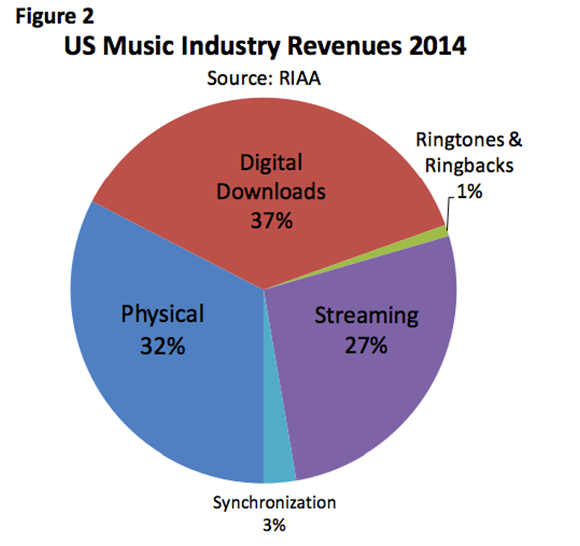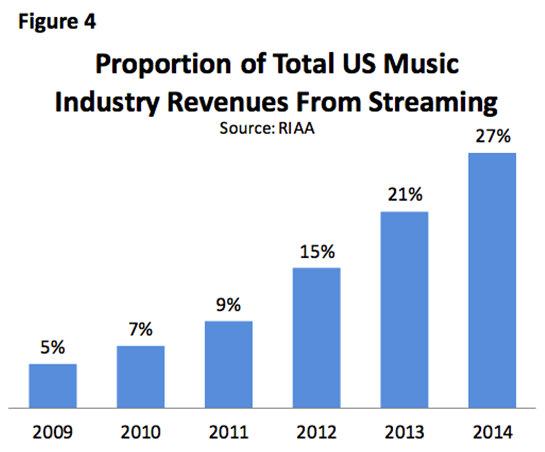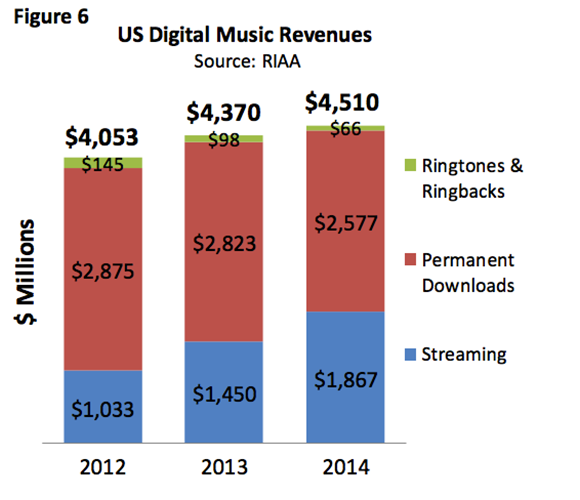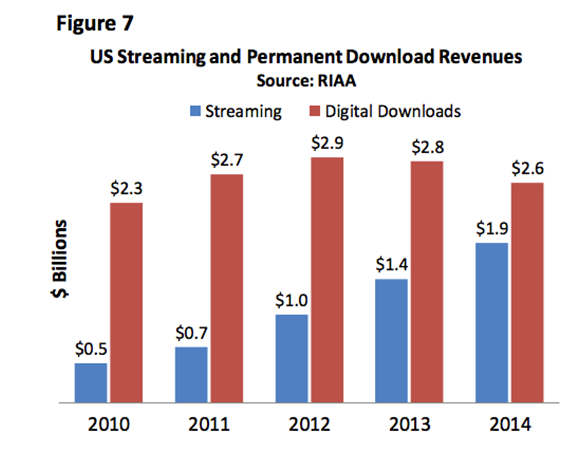Where are musicians most likely to earn a buck?
(By Marisa Frydman)
Between internationally popular services such as Spotify and Pandora, musician-owned services such as Jay-Z’s Tidal and Neil Young’s Pono, and highly anticipated services from Apple and Google, music streaming has officially solidified its position as the new popular method of listening to music.
However, there is an incredible amount of backlash from big-named artists against these digital music mediums. Taylor Swift and Radiohead’s Thom Yorke pulled their music from Spotify due to unfair artist compensation. Mumford & Sons, Death Cab for Cutie’s Ben Gibbard, and Steve Albini recently came out against Tidal, stating that the service’s high price tag for exclusive content further encourages music piracy. Despite these big names taking a stance against a given popular music streaming service, the data has been collected and the numbers do not lie. Music streaming services are here to stay.

In March 2015, the Recording Industry Association of America (RIAA) released their annual Music Industry Shipment & Revenue Report from 2014 and the data revealed something quite fascinating. Over the past year revenue generated from streaming services grew 29%, pulling in 1.87 billion dollars. The same report also revealed that CD sales decreased 12.7% from the prior year, generating 1.85 billion dollars in revenue. In other words, 2014 was the first year that revenue generated from music streaming services surpassed that of CD sales.

According to figure 2 shown above, you will notice that the total physical music sales still bring in more money than streaming services. That is due to the slight resurgence in vinyl record sales by 49% from the prior year. You will also notice in figure 2 that digital download sales generate the most revenue for the music industry at 37%. That number actually decreased by 8.7% over the past year due to the rise in popularity of streaming services. I expect that number to decrease even further over the next few years.


So what does this mean for the up and coming musician? How does this influence the music promotion process and “getting yourself noticed” while making money at the same time? The answer is that the graphs speak for themselves. The influence that music streaming services such as Spotify, Pandora, and Rdio in the USA as well as internationally is undeniable. At this point, it would be silly for an up-and-coming musician not to release new music on a streaming service. Not only will you receive compensation per stream, but your music will also become searchable, attracting more listeners than a physical format release will.
As stated above, digital downloads still generate the most revenue for the music industry despite the rise in music streaming service popularity. Because the digital download format places more emphasis on singles than whole albums, the product or song released needs to be that much more intricate, catchy, and overall better than the last. For the best promotional outcome, each song released by an up and coming musician should be good enough to stand alone as a single. The pressure is on but the product and the ultimate outcome will be more positive.
The facts and figures released by the RIAA reveal a map for the new independent musician to find the road to success. It also implies something deeper about the state of the industry itself. The physical CD and the concept of the traditional LP release are quickly becoming antiquated models within the industry. As most already know, the traditional music industry money-making model went out the window with the invention of Napster and major labels are still struggling to recover their losses with the conception of a new model. With all of this said, the best way for a new artist or band to promote new music is to think outside the standard 10-12 song LP box. The more innovative the promotional release method is, the more people will catch on and more potential listeners will take notice. Create and release three or four “musical masterpieces” instead of a large amount of mediocre songs. The facts and figures will point you in the right direction and your future fans will thank you for it.
To view News and Notes on 2014 RIAA Music Industry Shipment and Revenue Statistics in full, please click here.


